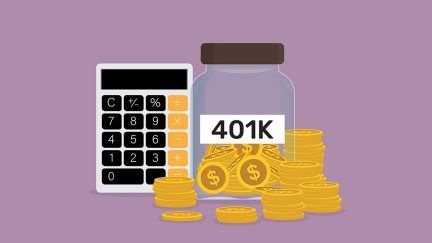Never miss a story — sign up for PLANADVISER newsletters to keep up on the latest retirement plan adviser news.
Biden Budget Would Eliminate Backdoor Roth Conversions, Consider Tax Change to Bolster Social Security
The reform would raise $23.7 billion over 10 years, according to the Department of the Treasury.
President Joe Biden introduced his budget proposal for fiscal 2025 on Monday, addressing areas including tax increases, Social Security and Medicare. The proposal included several changes that would potentially increase taxes on wealthier people to support benefit programs.
Tax Increases
The budget proposal includes reforming “tax-preferred retirement incentives to ensure that the ultrawealthy cannot use these incentives to amass tax-free fortunes.” This is likely a reference to mega backdoor Roth conversions, in which a saver can convert 401(k) investments into a Roth individual retirement account or Roth 401(k) if the feature as available.
A budget table published by the Department of the Treasury noted the proposal would “prevent excessive accumulations by high-income taxpayers in tax-favored retirement accounts and make other reforms.” It estimated that the proposal would generate almost $7 billion in tax revenue in 2025, $23.7 billion over 10 years.
The president’s budget would also eliminate the carried interest loophole, which, according to the proposal, “allows wealthy investment managers to pay a 20 percent rate on the pay they receive for managing fund assets, instead of the current 37 percent rate that comparable wage earners pay.”
Taxing carried interest as income rather than as capital gains would raise about $6.5 billion over 10 years, according to the Treasury’s budget table.
The budget also calls for the stock buyback tax to be increased to 4% from 1% in what the administration called a “surge in corporate stock buybacks” after tax cuts made during the administration of former President Donald Trump. The proposal would also raise the minimum income tax for billionaires to 25%, up from what the Biden administration claims is an average tax rate of 8%, according to the administration, after tax preferences—that number is based on a hypothetical situation in which unrealized stock market gains were taxed each year, rather than only being taxed when the stock is sold.
Meanwhile, large corporations would pay more as well, with the corporate tax rate going up to 28%, while setting a minimum of 21% for billion-dollar companies in income taxes.
“President Biden believes large corporations should pay their fair share and is committed to reversing the massive tax giveaway to big corporations that Republicans enacted in 2017,” the administration wrote.
Social Security
The budget proposal stated that “The President opposes any proposal to cut benefits, as well as proposals to privatize Social Security” and proposed a 9% increase to the Social Security Administration’s operating budget so the agency can improve its customer service.
The Biden administration also suggested that the president might support increasing or even removing the cap on income subject to Federal Insurance Contributions Act taxes—currently $168,600—to help fund Social Security, though the proposal does not explicitly say this: “Currently, middle-class and lower-income Americans pay Social Security taxes on all of their earnings, but higher-income Americans do not. That’s not fair. The President believes that protecting Social Security should start with asking the highest-income Americans to pay their fair share.”
The budget tees up a debate about Social Security funding and administration during the presidential election in 2024. On Monday, presumptive Republican nominee Trump was asked how he would handle Social Security, Medicare and Medicaid on CNBC’s Squawk Box. He responded that, “there is a lot you can do in terms of entitlements in terms of cutting and in terms of also the theft and the bad management of entitlements—tremendous bad management of entitlements.”
The former president added that, when it comes to the Biden administration, “I know that they’re going to end up weakening Social Security, because the country is weak.”
Biden later responded on a social media post on X, the platform formerly known as Twitter: “not on my watch,” in reference to the remarks about cuts to Social Security.
Medicare
The administration is also seeking tax increases to help fund Medicare.
The budget proposal would “modestly increase the Medicare tax rate on income above $400,000,” the administration wrote.
It would also seek to close “loopholes” for high-paid professionals and wealthy business owners to avoid the tax, and it would direct all Medicare tax revenue into the Medicare Hospital Insurance Trust Fund, with the goal of extending “the life of the Medicare HI Trust Fund,” the administration wrote.The plan is before Congress, but unlikely to get any movement, particularly in the Republican-controlled House, which will offer its own spending plans for 2025. Meanwhile, the government will need to work through spending needs for the current year, as a continuing resolution is set to expire on March 22.
You Might Also Like:

Senate Committee Debates Social Security Funding Proposal

Do Retirement Portfolios Need ‘Protected’ Income?

Retirement Expert Says Social Security Not ‘Going Bankrupt’
« Record Number of Participants Raised Deferral Rate in 2023, Vanguard Reports
